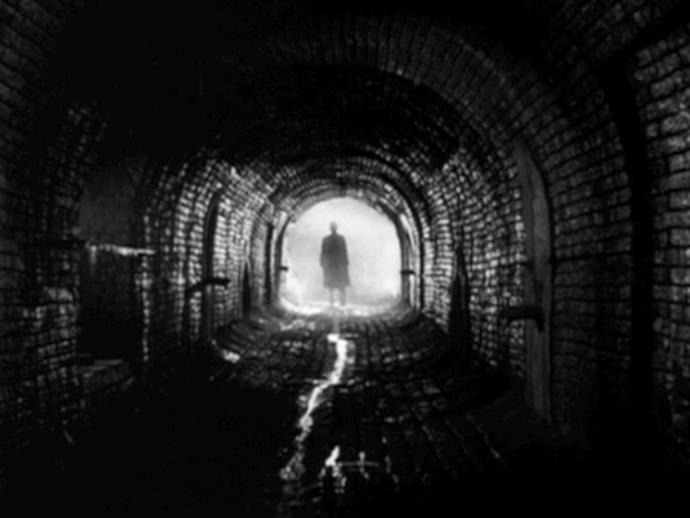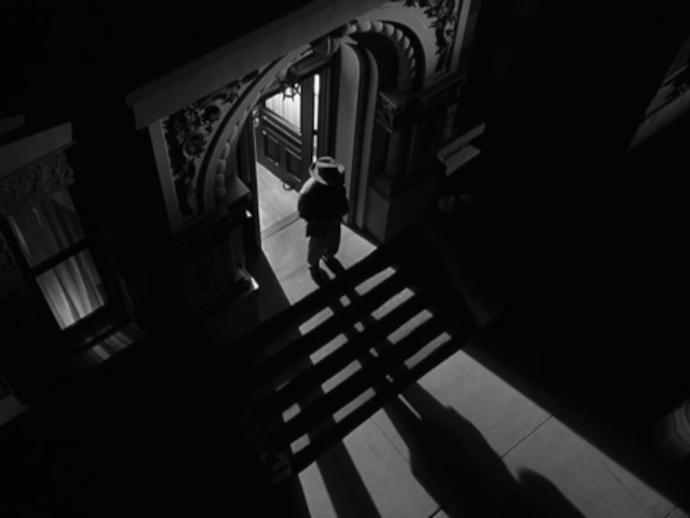The classic film noir movie genre refers to a genre of movies that were released roughtly between 1945 and 1960. While these movies share thematic elements, the genre’s most defining characteristics include a dark, fatalistic mood and a visual style that emphasizes low-key lighting and unbalanced compositions. Some may claim that “noir” isn’t exactly a movie genre but more of a style or aesthetic. Countless books, essays, and articles have been written on the subject, but no one seems to be able to agree on a concrete definition beyond these vague-yet-iconic characteristics. The neo-noir movie genre is an even more loosely-defined genre, referring to movies primarily released after 1960 that share the visual style and dark mood of their classic film noir predecessors. Neo-noir movies tend to share thematic elements, but that isn’t required to be considered “neo-noir.” There’s no consensus on what “neo-noir” actually means. One person’s neo-noir movie is another person’s mystery/suspense/thriller movie. For me personally, I’ve always gone with the notion that neo noir is one of those “you know it when you see it” definitions. The neo-noir genre also has several subgenres, including future neo-noir (e.g. Blade Runner), western neo-noir (e.g. True Grit), horror neo-noir (e.g. The Ninth Gate), among others. And then there are movies like Chinatown that take place in the classic noir era and could qualify as period pieces. For this article, we aren’t looking at any neo-noir subgenres. Furthermore, one of my own personal qualifications for classic noir and neo-noir movies is the element of crime in the plot. Here are the best neo-noir movies that represent the genre in its purest and most unadulterated form—troubled characters in unfortunate circumstances, tangled up in a world of crime.
5. Le Samourai (1967)
Le Samourai (later released as The Godson in the US) is a crime movie from the French new wave era of film, and a well-deserved classic of the neo-noir film genre. This movie is more emblematic of the classic noir visual style than any other movie on this list. Moral ambiguity, opulent Paris nightclubs, cigarette smoke floating in the sunlight that leaks into rooms, fedoras, gabardine trench coats, and revolvers… …and it’s all filmed in black and white. If you’re looking for that classic noir look and feel, this is the movie to check out.
4. Jackie Brown (1997)
No matter how the debate over the definition of “neo-noir” goes, everyone can agree that Jackie Brown qualifies. This movie is low-key cooler than cool. If all of Tarantino’s movies were in a bar fight, Jackie Brown would be having an indifferent smoke in the corner. Almost all of Tarantino’s movies deal in typical noir themes and subject matter, but none adhere as fully to the characteristic mood and style as Jackie Brown does. The way this movie is lit in many of its scenes is enough to place it firmly within the genre.
3. The Long Goodbye (1973)
The Long Goodbye is a revered neo-noir classic. Elliot Gould stars as Phillip Marlowe, a private-eye character created by novelist Raymond Chandler. The character has been played by various actors in multiple film adaptations. The plot involves Marlowe becoming unwittingly entangled in the aftermath of the murder of his friend’s wife. The Long Goodbye utilized the tropes of its noir predecessors while creating a few of its own that were imitated by many neo-noir movies that followed.
2. Blue Velvet (1986)
Other than Elephant Man, 1986’s Blue Velvet might just be David Lynch’s most literal film. Most of his other movies employ varying degrees of subjective dream logic, which provide a playground for symbolism and viewer interpretation. But that subjective dream logic can also be a frustration for anyone who just wants to concretely know what the hell’s going on in the movie. And so, if you’re new to David Lynch movies, this is the one to start with—they only get weirder from here. Blue Velvet explores the idea that under the idyllic facade of a 1950s-style mid-80s neighborhood lies a seething, ever-present evil that’s barely contained under its surface. That evil is personified by Dennis Hopper in his most iconic role as Frank. The notoriously unhinged Hopper was born to play him, one of the strangest and most menacing characters ever put on screen.
1. Blood Simple (1984)
Whatever the definition of “neo-noir movie” might be, most would agree that the Coen brothers are master practitioners of it. I could easily have put several Coen brothers’ movies on this list, but in the interest of variety I kept it to just this one. Blood Simple is the first movie by the Coen brothers, and is one of the purest examples of a neo-noir film. On its face, this is a simple crime flick—but as always, the Coens take what has been done countless times before and do it better. They understand this genre better than any other filmmakers. They’re able to create a movie that can be read at face value, while also commenting on itself and its genre on a meta level. It’s so self-referential that it almost seems to be winking at you at times. Blood Simple is an incredible writing and directorial debut. It establishes much of what the Coens would come to be known for, and it was all done on a small budget with no frills. It’s proof that you don’t need much to produce a top-quality movie. Read next: The best gangster movies of all time









